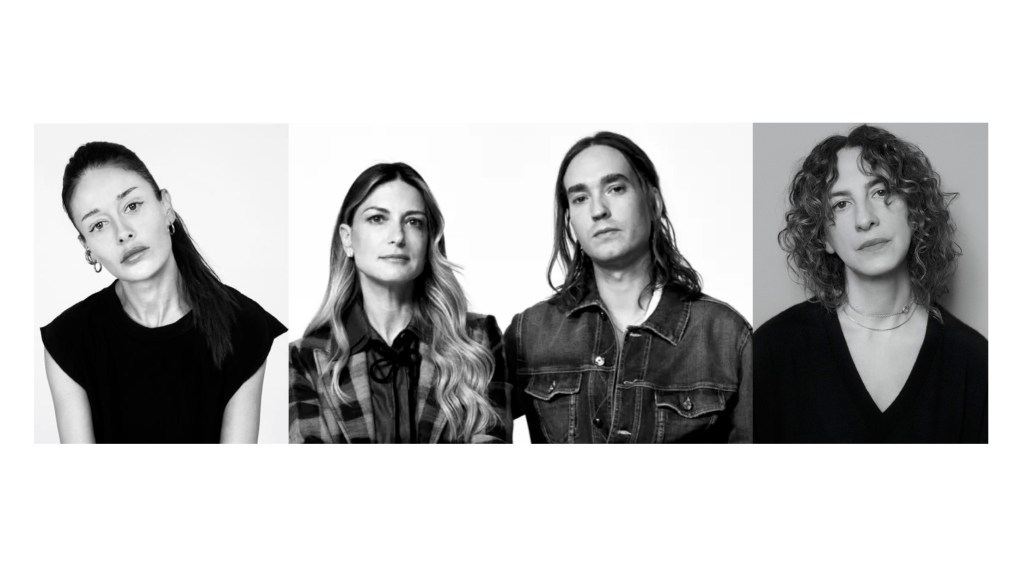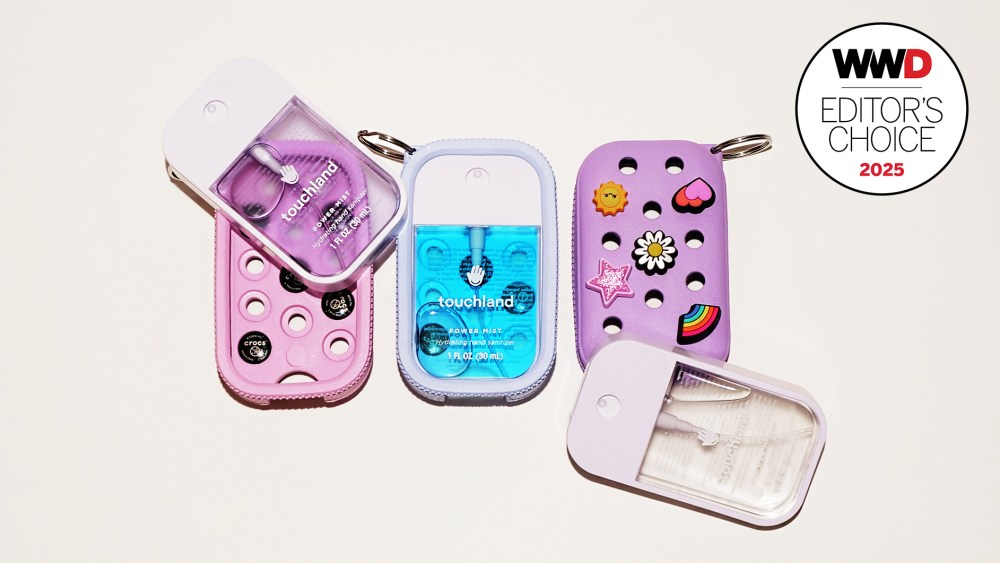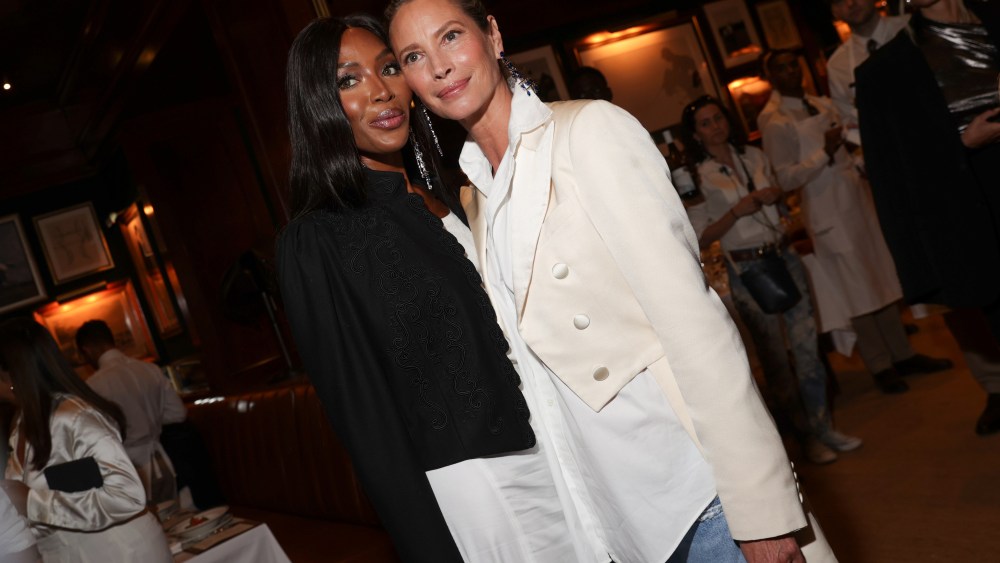MILAN — It’s not only runway shows. In this edition of Milan Fashion Week filled with debuts — led by the buzzy trifecta of Sabato De Sarno at Gucci, Peter Hawkings at Tom Ford and Simone Bellotti at Bally — there are also first-timers to watch off the catwalk.
Enriching the busy schedule of presentations, three brands are to unveil their course under new creative directors on Thursday. These include Fiorucci launching its new chapter under the vision of Francesca Murri; Fabiana Filippi stepping into uncharted territory with its first creative director, Lucia De Vito, and Jacob Cohën unveiling its first main collection designed by American talent Matthew Adams Dolan.
Here, a preview of what to expect from these collections.
Fiorucci
Energy was running high at the small office that physically embodies Fiorucci’s return to Milan. The brand founded by the late visionary designer Elio Fiorucci last summer unveiled a comprehensive plan for a relaunch that included decamping from London to return to its roots under a new owner, new management and the new creative direction of Francesca Murri.
A young team and Murri’s enthusiasm set the upbeat mood during a preview ahead of the reveal of what the designer defined “collection zero.” To be sure, the presentation on Thursday will display 15 looks, making for a teaser of the first full-fledged range that Murri will present in November with her first pre-collection.
Although the idea is to offer the audience just a taste of what’s to come, Murri studied the launch across all aspects and didn’t shy away from tapping into a rich pool of references for her seminal effort.
Cue her mood board spanning two big panels and densely plastered with Technicolor images of archival Fiorucci prints, Pop art works and plenty of food pictures. Murri’s overarching vision hinges on the return of physical experiences, ranging from restoring in-person community-building occasions to exploring the brand through all senses. Hence the plethora of fruit and candy prints with an ironic or sensual twist, ranging from cherries to lollipops; bold color blocking; 3D textures, or embellishments like fringes on shirts, fun patches on lingerie and maxi-floral shapes on easy-to-wear skirts.
“Fashion should be a game through which you can express yourself. I think the overall approach to this brand should be lighthearted: it was Elio’s approach to fashion, after all. Today everyone takes himself so seriously, which is something I don’t want to do,” said Murri, who has been tasked to oversee all categories with the goal of repositioning the brand in the accessible luxury segment.

In the collection, the designer wanted to recreate the duality between a more daily offering infused with Pop prints and pastel colors, and a nocturnal side nodding to clubbing and defined by darker shades, scarlet accents and body-hugging vinyl and Lycra fabrics.
Hailing straight from the archives, an animalier pattern with bananas designed by Andy Warhol for Fiorucci was splashed on separates or translated into jacquard, while the invitation for the Studio 54 opening party hosted by the brand’s founder was turned into a sweater with ‘80s-inspired shoulders.
“I’m obsessed by the idea of the silhouette, I think that’s at the base of the success of every look,” said Murri, who underscored the importance of offering feel-good and easy-to-approach shapes. These ranged from T-shirts morphed into long frocks to couture-inspired pieces rendered in Neoprene and featuring elastic bands for better wearability.
As for the iconic Fiorucci Angels iconography, it appeared as a subtle logo here and there, almost difficult to detect. “I didn’t explore this concept so much because I want to protect the [Angels]. In the previous course, there was an explosion of this imagery. Now their usage is going to be more measured,” said Murri.
But she didn’t hold back in the accessories arena, a category seen as pivotal in this new chapter of the business. “It’s such a key element for me, I see it as a way to Fiorucci-fy all the rest. It’s like sugar coating,” said Murri. No wonder she developed a leather bag shaped like a marshmallow, conceived “to offer women an alternative to what they already have in their wardrobe.” Puffy Neoprene flip-flops and a unisex ballet flat with a heart-shaped metal toe were part of the footwear selection.

The collection is to be unveiled in an industrial space, which will clash with a setup featuring pink carpeting and maxi images of lips. A diverse cast of women and men will sport the gender-bending collection, in a presentation intended to exalt the individual personality of talents not only through clothes but different beauty looks, too.
Murri hails from established houses, as her previous jobs included stints at Ferragamo, Versace, Giorgio Armani, Gucci alongside Alessandro Michele and Givenchy during Riccardo Tisci’s tenure.
“Working with Michele for many years has been super important for me, in terms of creativity and understanding how to build a collection, for example,” said Murri. “From him I learned how to work in a team, how to involve everyone since the beginning of your creative process and to take the best from everyone,” added the designer, who now looks to inject the same spirit at Fiorucci.
Fabiana Filippi
An industry veteran, Lucia De Vito is to make her debut as Fabiana Filippi’s new creative director — the first since the label was established in 1985 in Perugia, in central Italy, by brothers Giacomo and Mario Filippi Coccetta.
“It took eight months of meetings to get to know each other and finalize the appointment, which is understandable because this was a key change for them,” recalled De Vito over Teams. “They felt the need to have a stronger and more contemporary image, to change the pace but while identifying the right person that could embrace the company’s values,” added the designer, who leads the firm’s ready-to-wear and women’s accessories collections, and also oversees the brand’s image.
De Vito discovered a company she wasn’t familiar with. “A gem, like there are many in Italy but we don’t even imagine, scattered in unthinkable places. I was fascinated by the structure and know-how,” said the designer, as she praised Fabiana Filippi’s Made-in-Italy production, signature knitwear expertise and its “human touch.”

To impress De Vito was not an easy feat, as her résumé is filled with marquee industry brands. She started her career at the end of the ‘90s at Alberta Ferretti, before joining Jil Sander, a company that has hugely impacted her own creative vision marked by the masculine-feminine duality, rigorous line and overall understated and sober elegance. Later stints at Valentino, Nina Ricci and Chloé in Paris, Missoni and, most recently, Emilio Pucci, further strengthened her skills and perfected her aesthetic.
For her seminal collection at Fabiana Filippi, De Vito wanted to express the bond between the brand and its roots. Her research caused her to dive into medieval references, which she discussed with an art gallerist friend that suggested she meet with Milan-based artist Benni Bosetto.
The two collaborated on some prints that will appear in the collection, as well as on macramé knits and a series of jewelry. Elsewhere, De Vito’s rigor and sobriety will shine through via the precise tailoring in jackets, duster coats and skirts. The lab coat will be a recurrent element, in a nod to the pragmatism of making things, while fabrications will range from poplin and leather to denim and lace embellishments. Soft hues, like yellow and apricot, will add a delicate touch of color in a lineup dominated by white, black and gray shades.

To be unveiled on Thursday, the collection will be presented with a little help from a performance by choreographer Yoann Bourgeois and soundtrack by pianist and composer Hania Rani.
“There are so many brands showing during Milan Fashion Week, we wanted to do something different than a runway show, mixing art, culture and dance to fashion,” said De Vito, who teased that the set will center on a rotating platform serving as a stage for both models and dancers.
Asked about her wishes and expectations for this debut, De Vito said she would like to see women “reassured by what they see and encouraged to wear the pieces,” which will be aimed at delivering a mix of modernity and spontaneity.
“I know it’s obsolete to speak about elegance, but I always try to,” said the designer with a smile. “I don’t want to revolutionize the Fabiana Filippi woman, just evolve her image.”
Jacob Cohën by Matthew Adams Dolan
Talk about a dynamic duo. When earlier this year Matthew Adams Dolan was tapped to helm womenswear at Italian premium denim brand Jacob Cohën, operating under the artistic direction of Jennifer Tommasi Bardelle, the announcement didn’t come as a complete surprise.
The two of them had already collaborated on a capsule range last year, but decided to strengthen their tie-up as Tommasi Bardelle — whose husband Nicola Bardelle relaunched the brand before dying in an accident in 2012 — said she saw “the creative flair that has always characterized Nicola’s work” in the American designer.
“We used the collaboration in the beginning to know each other…when I met him and saw how he was working and the mood and attitude he was putting in the collection, I said: ‘I got it. He’s my man.’ But you can’t be drastic in life. So we did it step by step, which is s a leitmotiv in my life after my husband’s death,” said Tommasi Bardelle.

Adams Dolan recognized there is “a lot more intention” in approaching the creative process in this new role. “The brand has such a strong menswear offering and I think the whole purpose of the collaboration in the first place and working now on the main collection has been to sort of give a bit more body and substance to the womenswear and have a full line that can support the main focus, which is the jeans,” said the designer.
Tommasi Bardelle’s aim is to restore the women’s business to match the time her husband was leading the company, therefore to account for 30 percent of total sales compared to the current 18 percent.
“I expect at least that. I’m aware enough not to expect it immediately. But I can see the potential that a brand like ours can have, because I see it mixed with the top luxury labels, and because we are 100 percent made in Italy. And thanks to Matthew, we have this contemporary and fashion [side],” said Tommasi Bardelle.
Adams Dolan stressed the importance of not alienating the existing clientele by easing it into the new direction with uncomplicated silhouettes and daily staples. For spring 2024, the designer focused also on the idea of lightness through textures, “which in a denim company is not the easiest thing to do, because this is not the most summer-friendly fabric,” he noted.
To complement soft-handed denim, the designer crafted separates from ultralight cotton, while overall he juxtaposed utilitarian shapes with more feminine touches. He styled cargo pants worn with safari jackets to create a jumpsuit-reminiscent look, or created one-shoulder dresses that recalled denim shirts wrapped around the body.
“There’s quite a big scale in terms of wearability: there are things that are more occasional and others more for every day. It really sort of runs the gamut of all of those elements,” said Adams Dolan, who also introduced zingy colors, checkered patterns and white looks to flank the denim pieces.
Yet denim will be predominant at the presentation that will mark the brand’s debut in the Milan Fashion Week schedule, as 14 total looks considered most representative of the designer’s work are expected to get the spotlight.

Denim has been regularly employed by Adams Dolan also for his namesake brand, which he launched with a spring 2016 collection after graduating from the MFA Fashion Design and Society Program at Parsons School of Design in New York.
Born in Danvers, Massachusetts, Adams Dolan studied in Australia, Japan and Switzerland before moving to New York. The designer has also collaborated with Rihanna, who enlisted him to consult on her Fenty for Puma collections and then the launch of her Fenty brand with LVMH Moët Hennessy Louis Vuitton in 2019. In 2018, he was selected as one of the nine finalists for the LVMH Prize.
“I’ve been very fortunate to be able to learn how to work as a part of a team since the beginning of my career. It’s a very important asset to have: to be able to have a good relationship with the technical teams and make the most out of that,” said the designer. “And having my own brand, I’m always very conscious about things like making sure that you’re on top of costs.”
“I am the owner, and he looks more after costs than I do. In that way, he’s really incredible, he’s like an engineer,” concluded Tommasi Bardelle.



